 Baghouse dust collectors are the workhorses of industrial air‑filtration. Inside each unit, rows of filter bags trap particles from your manufacturing processes, keeping plant air clean and safe. To know how well the collector is doing its job, you need to watch one key metric: differential pressure.
Baghouse dust collectors are the workhorses of industrial air‑filtration. Inside each unit, rows of filter bags trap particles from your manufacturing processes, keeping plant air clean and safe. To know how well the collector is doing its job, you need to watch one key metric: differential pressure.
Think of differential pressure as your system's health report. It shows when filters are getting clogged, and it also warns you about maintenance needs. Most importantly, it helps you avoid unexpected breakdowns and expensive repairs. Understanding this core measurement can save your facility thousands in downtime and repair work.
At A.C.T. Dust Collectors, we've seen plants transform their operations by simply paying attention to pressure readings. Our TLM baghouse dust collectors come equipped with monitoring systems that make this easy. In this post, we’ll explain how plant managers and operations personnel can improve system efficiency and equipment reliability by interpreting differential pressure readings - let's dive in.
What is Differential Pressure in a Baghouse Dust Collector System?
When you're running a baghouse dust collection system, one of the most important performance indicators to keep an eye on is differential pressure. In simple terms, this is the difference in air pressure between the dirty side of your filters (where dust-laden air enters) and the clean side (where filtered air exits). This single reading reflects how well the whole collector, including its filters, cleaning mechanism, and airflow path, is performing.
As dust builds up on the filters, airflow naturally meets resistance. The more dust clogging the filter media, the harder it is for air to pass through, causing the differential pressure to rise. That rise in pressure is telling you how well your baghouse filters are doing their job, and whether your system is operating efficiently or being pushed to its limits.
For most baghouse systems, the normal operating range is 2 to 6 inches of water gauge (in. w.g.). When your filters are new, you'll typically see readings below 2 in. w.g., but once they're conditioned with a dust cake, the baseline should stabilize around 2 in. w.g. As filters collect more dust over time, it's normal for pressure to gradually increase toward 6 in. w.g.
When readings consistently exceed 6 in. w.g., it's a clear sign your filters need cleaning or replacement. Ignoring these signs can lead to poor airflow, unnecessary strain on your fans, and higher energy costs.
How Differential Pressure is Measured
Monitoring differential pressure regularly is essential to keep your dust collection system running efficiently, and starts with understanding how it’s measured.
Differential pressure is typically measured using gauges, transmitters, or switches. Gauges (analog or digital) provide a live readout of system performance, while transmitters convert pressure data into electrical signals for remote monitoring or automated cleaning. Pressure switches trigger alarms or system actions when differential pressure falls outside safe limits, making them ideal for preventive maintenance setups.
The "normal" pressure range can vary depending on your system type and filter media. As aforesaid, the industry standard recommendations suggest operating between 2-6 in. w.g. for most baghouse systems. However, specific ranges can vary by cleaning method:
Pulse Jet Baghouses (like the A.C.T. TLM series): The most common modern baghouse type, using short bursts of compressed air (about 1 second) to clean bags without interrupting airflow. These systems can operate continuously. Differential pressure often stabilizes at 2 - 4 in. w.g.
Medium-Pressure Baghouse Systems (like the A.C.T. ARB series): Use lower‑pressure reverse airflow delivered by a rotating arm that cleans the bags as it moves, allowing both online cleaning and offline maintenance when required. Differential pressure ranges typically 3 - 6 in. w.g.
At A.C.T. Dust Collectors, we recommend establishing a baseline differential pressure right after installing new filters. This gives you a reference point to compare future readings against. If your system starts consistently reading well above that baseline, it’s time to investigate whether cleaning cycles are working properly or if your filters need replacing.
What Differential Pressure Tells You About Filter Performance
Differential pressure is a real-time indicator of how your filters are performing. When monitored consistently, it becomes one of the most effective tools for diagnosing system issues and planning preventative maintenance.
If you’re seeing high differential pressure, it usually means one of three things:
- Excessive dust cake buildup on the filter media, which creates too much resistance to airflow.
- Clogged or blinded filters that can no longer be cleaned effectively, even during pulse cycles.
- A faulty or ineffective cleaning system, where pulses aren’t strong enough or frequent enough to remove built-up dust.
- Cleaning-system faults - think weak pulse bursts, faulty solenoids, damaged diaphragms, or header pressure below spec.
Running a system under high pressure stresses your fans, reduces airflow, and raises energy costs - all while risking downtime. If cleaning cycles aren’t correcting the pressure, the filters likely need to be replaced.
On the other hand, low differential pressure can be just as concerning. It might indicate:
- Leaking filter bags, where air (and potentially dust) is bypassing the filter entirely.
- Improper dust cake formation, which means the filters aren’t capturing particulate as intended, possibly due to the wrong filter media for the application.
- Airflow bypass, caused by poor system sealing or misaligned filters.
A healthy baghouse system will typically show a gradual increase in differential pressure over time. This is normal as filters load with dust. What you want to watch out for are sudden spikes or drops, just know that these are red flags. A sharp spike could suggest a blockage or failed cleaning cycle, while a sudden drop might mean a bag has blown out or a seal has failed.
By tracking these trends, you’re not just reacting to issues but preventing them. AT A.C.T., we recommend plant managers diligently use differential pressure readings to time their filter replacements, spot underperforming components, and verify cleaning system performance.
Luckily, modern plants tie the differential pressure transmitter to the PLC (Programmable Logic Controller). When the signal hits a preset limit, the controller can extend pulse duration, trigger an alarm, or even auto-generate a maintenance work order. That predictive workflow lets you correct small problems long before they stall the line.
Common Causes of Abnormal Differential Pressure
When differential pressure in your baghouse system strays from the expected range, it's often a sign that something isn’t working as it should. Here are some of the most common culprits:
- Process change that overloads the dust collector (new grinder, faster line speed)
- Incorrect or poor-quality filter media for the dust being handled
- Pulse valves out of sync, solenoids stuck, or header pressure below 90 psi
- Hygroscopic or sticky dust bridging between bags after a humid shift
- Duct elbows, blast gates, or spark traps clogged and starving airflow before it reaches the housing
In most cases, one of these five checks will pinpoint the root cause of abnormal differential pressure and get your system back on track quickly.
How to Optimize Differential Pressure for Better Performance
To keep your system running at peak efficiency, start by checking your differential pressure gauge daily and keeping a weekly log. This helps you spot trends before they turn into problems.
Next, take a close look at your filter media. Make sure it's suited to your dust type, temperature, and chemistry - the right blend, finish, and weight can make a big difference in how well your baghouse filters perform.
If you're looking to improve airflow, consider upgrading to pleated filters. They offer two to three times the surface area, which often drops differential pressure by several inches right away.
Last, don’t forget your ductwork! Poorly balanced branches or sagging flex hoses can eat up static pressure before the air even reaches the filters. Good hood design, smooth transitions, and sealed joints ensure that dust travels all the way to the collector, not just halfway through the duct.
Why Monitoring Differential Pressure Matters for Efficiency and Compliance
Monitoring differential pressure isn’t just a maintenance task. It directly impacts your system’s efficiency, operating costs, and regulatory compliance.
Every extra inch of differential pressure forces your fan to work harder, which increases energy consumption and reduces airflow. For example, if your system is designed to run at 4 in. w.c. but if it is operating at 8, you could experience significant airflow reduction - enough to allow fine dust to escape into work areas and create safety risks.
The consequences aren’t just theoretical. In October 2024, OSHA proposed $536,000 in fines against a Nebraska grain cooperative where poor ventilation and dust buildup led to combustible dust hazards. Incidents like these highlight why keeping differential pressure within target range is critical - not only for system performance but also for worker safety and compliance with agencies like OSHA and the EPA.
When you stay on top of differential pressure, you're gaining more than cleaner air. You're extending filter life, cutting power costs, and improving control over airborne contaminants. If you’re ready to learn more, Download Our Dust Collector Maintenance Checklist or request a quote for a live system audit from the A.C.T. team.
Choosing the Right Baghouse System and Filters
Not all dust behaves the same - and choosing the right baghouse system and filters can make all the difference in maintaining optimal differential pressure and reducing maintenance headaches. For example, welding fumes call for a pulse jet baghouse system with ePTFE membrane filters to handle ultrafine particles, while a foundry shakeout line performs better with a shaker baghouse using aramid felt to withstand high-heat bursts.
At A.C.T. Dust Collectors, we help you select the best solution for your application from our proven lineup - like the TLM baghouse series, Ambient Dust Collector Series, and Round Baghouse series. Every system ships with performance test data and start-up support to ensure your differential pressure baseline is dialed in from day one. We’re committed to delivering quality products, hands-on support, and ongoing education to help you operate smarter and safer.
Are you feeling ready to upgrade your dust collection system? Request a quote or browse our most popular baghouse solutions to find the right fit for your facility.
Want to Keep Your Baghouse Filters Performing at Their Best?
Staying ahead of pressure issues starts with consistent maintenance and smart monitoring. When you take a proactive approach. By tracking differential pressure, inspecting filters, and tuning your systems, you can considerably extend filter life, cut operating costs, and reduce unplanned downtime.
And if you need help, A.C.T. Dust Collectors is here to support you every step of the way. Whether you need help troubleshooting differential pressure spikes in your Texas facility or selecting the right filter system for your manufacturing plant in Ohio, our team is ready to assist.
Download our free Dust Collector Maintenance Checklist for practical tips you can apply today.
Have questions or need reliable support? Contact us today to schedule a consultation or request a system quote.


























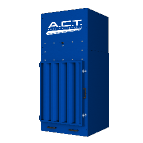
%20Collectors%20Image.png?width=143&height=143&name=ADC%20(Ambient)%20Collectors%20Image.png)
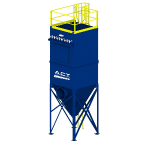

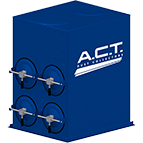
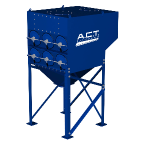
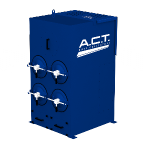


















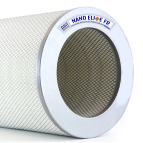


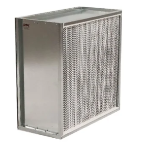

.png?width=240&height=91&name=ACT%20Dust%20Collectors%20Logo%20Solid%20White%202020%20(1).png)
.png?width=148&height=149&name=usa-manufactured-dust-collectors%20(1).png)